
Oger Emirates LLC Company Cyber Security Posture
saudioger.comSaudi Oger Ltd., incorporated in January 1978 under the rules and laws of the Kingdom of Saudi Arabia with its headquarters in Riyadh. Saudi Oger Ltd. is a private company, wholly owned by the Rafic Hariri family. Since its inception, Saudi Oger has become one of the leading Construction; Facilities Management Service Provider and Infrastructure Project Development companies in The Kingdom of Saudi Arabia and the region. In relatively short period of time Saudi Oger Ltd. has grown into a multi-company, multi-divisional organization with subsidiaries and affiliates in the Kingdom of Saudi Arabia and abroad. Established in 2003 in Abu Dhabi; and in a short period of time the company was able to secure mega projects such the Imperial College London Diabetes Centre which was completed in 2006 for Aldar; and currently Oger Abu Dhabi is executing UAE University project in Al Ain; and the 1st stage of Abu Dhabi Financial Center (ADFC). With the fusion of western technical expertise achieved from its overseas subsidiaries and the Middle Eastern knowledge and experience, the Company has become the center of excellence for the Construction, Facilities Management services and Infrastructure Project Development of challenging, prestigious and complex projects of advanced technology throughout the Middle East, Africa and Europe.
OEL Company Details
oger-emirates-llc
10,001+ employees
0
23
Construction
saudioger.com
Scan still pending
OGE_1049383
In-progress
Between 900 and 1000
This score is AI-generated and less favored by cyber insurers, who prefer the TPRM score.
 OEL Global Score
OEL Global Score.png)

Oger Emirates LLC Company Scoring based on AI Models
| Model Name | Date | Description | Current Score Difference | Score |
|---|---|---|---|---|
| AVERAGE-Industry | 03-12-2025 | This score represents the average cybersecurity rating of companies already scanned within the same industry. It provides a benchmark to compare an individual company's security posture against its industry peers. | N/A | Between 900 and 1000 |
Oger Emirates LLC Company Cyber Security News & History
| Entity | Type | Severity | Impact | Seen | Url ID | Details | View |
|---|
Oger Emirates LLC Company Subsidiaries

Saudi Oger Ltd., incorporated in January 1978 under the rules and laws of the Kingdom of Saudi Arabia with its headquarters in Riyadh. Saudi Oger Ltd. is a private company, wholly owned by the Rafic Hariri family. Since its inception, Saudi Oger has become one of the leading Construction; Facilities Management Service Provider and Infrastructure Project Development companies in The Kingdom of Saudi Arabia and the region. In relatively short period of time Saudi Oger Ltd. has grown into a multi-company, multi-divisional organization with subsidiaries and affiliates in the Kingdom of Saudi Arabia and abroad. Established in 2003 in Abu Dhabi; and in a short period of time the company was able to secure mega projects such the Imperial College London Diabetes Centre which was completed in 2006 for Aldar; and currently Oger Abu Dhabi is executing UAE University project in Al Ain; and the 1st stage of Abu Dhabi Financial Center (ADFC). With the fusion of western technical expertise achieved from its overseas subsidiaries and the Middle Eastern knowledge and experience, the Company has become the center of excellence for the Construction, Facilities Management services and Infrastructure Project Development of challenging, prestigious and complex projects of advanced technology throughout the Middle East, Africa and Europe.
Access Data Using Our API

Get company history
.png)
OEL Cyber Security News
Cybersecurity unicorn Cato Networks snags $359m, soaring to $4.8 billion valuation
Cato Networks, a maker of cloud-based, secured networks for large enterprises that lets remote workers connect to applications regardless of ...
ICC says new cybersecurity incident has been contained
The International Criminal Court (ICC) said on Monday it had detected a "new, sophisticated and targeted" cybersecurity incident late last ...
Mastercard Launches Program to Support Cybersecurity Startups
Mastercard has expanded its startup engagement program with a focus on cybersecurity, fraud mitigation and payment resiliency.
A Trio of US Treasury Hacks Exposes a Pattern Making Banks Nervous
In three major hacks, Treasury didn't deploy cybersecurity measures that could have prevented the attacks or flagged the intruders sooner, ...
Hackers tied to Iran preparing ‘calculated smear campaign’ on Trump, cyber agency says
Hackers suspected of working for Iran are threatening to leak allegedly stolen data in a bid to undermine President Donald Trump, ...
Cybersecurity Scholar Tackles AI Challenges for a Safer Tomorrow
As a McNair Scholar, Robinson conducted interdisciplinary summer research using machine learning to help develop an AI model that improves wind ...
A New Maturity Model for Browser Security: Closing the Last-Mile Risk
Discover how to secure browser usage in enterprises, from GenAI risks to control enforcement, with a three-stage maturity model.
Hong Kong needs more cybersecurity professionals as threats increase: report
Hong Kong needs more professionals focused on cybersecurity due to persistent threats and a limited talent pool, according to a recent ...
Over 95,000 Mainers affected by Hannaford cybersecurity breach
More than 2.2 million people, including over 95,000 Mainers, are among those affected by a cybersecurity breach that impacted IT systems at ...

OEL Similar Companies

PCL Construction
PCL is a group of independent construction companies that carries out work across Canada, the United States, the Caribbean, and in Australia. These diverse operations in the civil infrastructure, heavy industrial, and buildings markets are supported by a strategic presence in 31 major centers. PCL
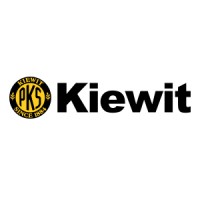
Kiewit
At Kiewit, the projects we deliver make a difference, and we offer opportunities for you to make one, too. Our construction and engineering professionals work on some of the industry’s most complex, challenging and rewarding projects – whether it’s boring tunnels through mountains, turning rivers in
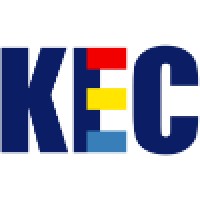
KEC International Ltd.
KEC International Limited, the flagship company of RPG Enterprises is a diversified global infrastructure Engineering, Procurement & Construction (EPC) major, with a presence in the verticals of Power Transmission & Distribution, Railways, Civil, Urban Infrastructure, Oil & Gas Pipelines, Solar, Sma
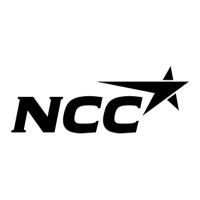
NCC
NCC is one of the leading construction companies in the Nordics. Based on its expertise in managing complex construction processes, NCC contributes to a positive impact of construction for its customers and society. NCC is one of the largest players in the Nordic construction market, and operates
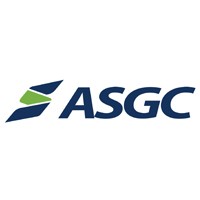
ASGC
ASGC is a vertically integrated construction group that is best known for delivering turn key special projects in the UAE. The company owns the majority of its supply chain and utilises mostly in-house resources, giving it a high degree of control over project quality and timely delivery. ASGC has
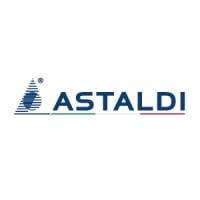
Astaldi
ASTALDI is an international construction group with a strong presence and a leading position in Italy; it constructs large and technologically complex infrastructures, acting primarily as EPC Contractor, but also as a concession operator. It is engaged in infrastructures in Transport Infrastructure

Frequently Asked Questions (FAQ) on Cybersecurity Incidents
OEL CyberSecurity History Information
Total Incidents: According to Rankiteo, OEL has faced 0 incidents in the past.
Incident Types: As of the current reporting period, OEL has not encountered any cybersecurity incidents.
Total Financial Loss: The total financial loss from these incidents is estimated to be {total_financial_loss}.
Cybersecurity Posture: The company's overall cybersecurity posture is described as Saudi Oger Ltd., incorporated in January 1978 under the rules and laws of the Kingdom of Saudi Arabia with its headquarters in Riyadh. Saudi Oger Ltd. is a private company, wholly owned by the Rafic Hariri family. Since its inception, Saudi Oger has become one of the leading Construction; Facilities Management Service Provider and Infrastructure Project Development companies in The Kingdom of Saudi Arabia and the region. In relatively short period of time Saudi Oger Ltd. has grown into a multi-company, multi-divisional organization with subsidiaries and affiliates in the Kingdom of Saudi Arabia and abroad. Established in 2003 in Abu Dhabi; and in a short period of time the company was able to secure mega projects such the Imperial College London Diabetes Centre which was completed in 2006 for Aldar; and currently Oger Abu Dhabi is executing UAE University project in Al Ain; and the 1st stage of Abu Dhabi Financial Center (ADFC). With the fusion of western technical expertise achieved from its overseas subsidiaries and the Middle Eastern knowledge and experience, the Company has become the center of excellence for the Construction, Facilities Management services and Infrastructure Project Development of challenging, prestigious and complex projects of advanced technology throughout the Middle East, Africa and Europe..
Detection and Response: The company detects and responds to cybersecurity incidents through {description_of_detection_and_response_process}.
Incident Details
Incident 1: Ransomware Attack
Title: {Incident_Title}
Description: {Brief_description_of_the_incident}
Date Detected: {Detection_Date}
Date Publicly Disclosed: {Disclosure_Date}
Date Resolved: {Resolution_Date}
Type: {Type_of_Attack}
Attack Vector: {Attack_Vector}
Vulnerability Exploited: {Vulnerability}
Threat Actor: {Threat_Actor}
Motivation: {Motivation}
Incident 2: Data Breach
Title: {Incident_Title}
Description: {Brief_description_of_the_incident}
Date Detected: {Detection_Date}
Date Publicly Disclosed: {Disclosure_Date}
Date Resolved: {Resolution_Date}
Type: {Type_of_Attack}
Attack Vector: {Attack_Vector}
Vulnerability Exploited: {Vulnerability}
Threat Actor: {Threat_Actor}
Motivation: {Motivation}
Common Attack Types: As of now, the company has not encountered any reported incidents involving common cyberattacks.
Identification of Attack Vectors: The company identifies the attack vectors used in incidents through {description_of_identification_process}.
Impact of the Incidents
Incident 1: Ransomware Attack
Financial Loss: {Financial_Loss}
Data Compromised: {Data_Compromised}
Systems Affected: {Systems_Affected}
Downtime: {Downtime}
Operational Impact: {Operational_Impact}
Conversion Rate Impact: {Conversion_Rate_Impact}
Revenue Loss: {Revenue_Loss}
Customer Complaints: {Customer_Complaints}
Brand Reputation Impact: {Brand_Reputation_Impact}
Legal Liabilities: {Legal_Liabilities}
Identity Theft Risk: {Identity_Theft_Risk}
Payment Information Risk: {Payment_Information_Risk}
Incident 2: Data Breach
Financial Loss: {Financial_Loss}
Data Compromised: {Data_Compromised}
Systems Affected: {Systems_Affected}
Downtime: {Downtime}
Operational Impact: {Operational_Impact}
Conversion Rate Impact: {Conversion_Rate_Impact}
Revenue Loss: {Revenue_Loss}
Customer Complaints: {Customer_Complaints}
Brand Reputation Impact: {Brand_Reputation_Impact}
Legal Liabilities: {Legal_Liabilities}
Identity Theft Risk: {Identity_Theft_Risk}
Payment Information Risk: {Payment_Information_Risk}
Average Financial Loss: The average financial loss per incident is {average_financial_loss}.
Commonly Compromised Data Types: The types of data most commonly compromised in incidents are {list_of_commonly_compromised_data_types}.
Incident 1: Ransomware Attack
Entity Name: {Entity_Name}
Entity Type: {Entity_Type}
Industry: {Industry}
Location: {Location}
Size: {Size}
Customers Affected: {Customers_Affected}
Incident 2: Data Breach
Entity Name: {Entity_Name}
Entity Type: {Entity_Type}
Industry: {Industry}
Location: {Location}
Size: {Size}
Customers Affected: {Customers_Affected}
Response to the Incidents
Incident 1: Ransomware Attack
Incident Response Plan Activated: {Yes/No}
Third Party Assistance: {Yes/No}
Law Enforcement Notified: {Yes/No}
Containment Measures: {Containment_Measures}
Remediation Measures: {Remediation_Measures}
Recovery Measures: {Recovery_Measures}
Communication Strategy: {Communication_Strategy}
Adaptive Behavioral WAF: {Adaptive_Behavioral_WAF}
On-Demand Scrubbing Services: {On_Demand_Scrubbing_Services}
Network Segmentation: {Network_Segmentation}
Enhanced Monitoring: {Enhanced_Monitoring}
Incident 2: Data Breach
Incident Response Plan Activated: {Yes/No}
Third Party Assistance: {Yes/No}
Law Enforcement Notified: {Yes/No}
Containment Measures: {Containment_Measures}
Remediation Measures: {Remediation_Measures}
Recovery Measures: {Recovery_Measures}
Communication Strategy: {Communication_Strategy}
Adaptive Behavioral WAF: {Adaptive_Behavioral_WAF}
On-Demand Scrubbing Services: {On_Demand_Scrubbing_Services}
Network Segmentation: {Network_Segmentation}
Enhanced Monitoring: {Enhanced_Monitoring}
Incident Response Plan: The company's incident response plan is described as {description_of_incident_response_plan}.
Third-Party Assistance: The company involves third-party assistance in incident response through {description_of_third_party_involvement}.
Data Breach Information
Incident 2: Data Breach
Type of Data Compromised: {Type_of_Data}
Number of Records Exposed: {Number_of_Records}
Sensitivity of Data: {Sensitivity_of_Data}
Data Exfiltration: {Yes/No}
Data Encryption: {Yes/No}
File Types Exposed: {File_Types}
Personally Identifiable Information: {Yes/No}
Prevention of Data Exfiltration: The company takes the following measures to prevent data exfiltration: {description_of_prevention_measures}.
Handling of PII Incidents: The company handles incidents involving personally identifiable information (PII) through {description_of_handling_process}.
Ransomware Information
Incident 1: Ransomware Attack
Ransom Demanded: {Ransom_Amount}
Ransom Paid: {Ransom_Paid}
Ransomware Strain: {Ransomware_Strain}
Data Encryption: {Yes/No}
Data Exfiltration: {Yes/No}
Ransom Payment Policy: The company's policy on paying ransoms in ransomware incidents is described as {description_of_ransom_payment_policy}.
Data Recovery from Ransomware: The company recovers data encrypted by ransomware through {description_of_data_recovery_process}.
Regulatory Compliance
Incident 1: Ransomware Attack
Regulations Violated: {Regulations_Violated}
Fines Imposed: {Fines_Imposed}
Legal Actions: {Legal_Actions}
Regulatory Notifications: {Regulatory_Notifications}
Incident 2: Data Breach
Regulations Violated: {Regulations_Violated}
Fines Imposed: {Fines_Imposed}
Legal Actions: {Legal_Actions}
Regulatory Notifications: {Regulatory_Notifications}
Regulatory Frameworks: The company complies with the following regulatory frameworks regarding cybersecurity: {list_of_regulatory_frameworks}.
Ensuring Regulatory Compliance: The company ensures compliance with regulatory requirements through {description_of_compliance_measures}.
Lessons Learned and Recommendations
Incident 1: Ransomware Attack
Lessons Learned: {Lessons_Learned}
Incident 2: Data Breach
Lessons Learned: {Lessons_Learned}
Incident 1: Ransomware Attack
Recommendations: {Recommendations}
Incident 2: Data Breach
Recommendations: {Recommendations}
Key Lessons Learned: The key lessons learned from past incidents are {list_of_key_lessons_learned}.
Implemented Recommendations: The company has implemented the following recommendations to improve cybersecurity: {list_of_implemented_recommendations}.
References
Additional Resources: Stakeholders can find additional resources on cybersecurity best practices at {list_of_additional_resources}.
Investigation Status
Incident 1: Ransomware Attack
Investigation Status: {Investigation_Status}
Incident 2: Data Breach
Investigation Status: {Investigation_Status}
Communication of Investigation Status: The company communicates the status of incident investigations to stakeholders through {description_of_communication_process}.
Stakeholder and Customer Advisories
Incident 1: Ransomware Attack
Stakeholder Advisories: {Stakeholder_Advisories}
Customer Advisories: {Customer_Advisories}
Incident 2: Data Breach
Stakeholder Advisories: {Stakeholder_Advisories}
Customer Advisories: {Customer_Advisories}
Advisories Provided: The company provides the following advisories to stakeholders and customers following an incident: {description_of_advisories_provided}.
Initial Access Broker
Incident 1: Ransomware Attack
Entry Point: {Entry_Point}
Reconnaissance Period: {Reconnaissance_Period}
Backdoors Established: {Backdoors_Established}
High Value Targets: {High_Value_Targets}
Data Sold on Dark Web: {Yes/No}
Incident 2: Data Breach
Entry Point: {Entry_Point}
Reconnaissance Period: {Reconnaissance_Period}
Backdoors Established: {Backdoors_Established}
High Value Targets: {High_Value_Targets}
Data Sold on Dark Web: {Yes/No}
Monitoring and Mitigation of Initial Access Brokers: The company monitors and mitigates the activities of initial access brokers through {description_of_monitoring_and_mitigation_measures}.
Post-Incident Analysis
Incident 1: Ransomware Attack
Root Causes: {Root_Causes}
Corrective Actions: {Corrective_Actions}
Incident 2: Data Breach
Root Causes: {Root_Causes}
Corrective Actions: {Corrective_Actions}
Post-Incident Analysis Process: The company's process for conducting post-incident analysis is described as {description_of_post_incident_analysis_process}.
Corrective Actions Taken: The company has taken the following corrective actions based on post-incident analysis: {list_of_corrective_actions_taken}.
Additional Questions
General Information
Ransom Payment History: The company has {paid/not_paid} ransoms in the past.
Last Ransom Demanded: The amount of the last ransom demanded was {last_ransom_amount}.
Last Attacking Group: The attacking group in the last incident was {last_attacking_group}.
Incident Details
Most Recent Incident Detected: The most recent incident detected was on {most_recent_incident_detected_date}.
Most Recent Incident Publicly Disclosed: The most recent incident publicly disclosed was on {most_recent_incident_publicly_disclosed_date}.
Most Recent Incident Resolved: The most recent incident resolved was on {most_recent_incident_resolved_date}.
Impact of the Incidents
Highest Financial Loss: The highest financial loss from an incident was {highest_financial_loss}.
Most Significant Data Compromised: The most significant data compromised in an incident was {most_significant_data_compromised}.
Most Significant System Affected: The most significant system affected in an incident was {most_significant_system_affected}.
Response to the Incidents
Third-Party Assistance in Most Recent Incident: The third-party assistance involved in the most recent incident was {third_party_assistance_in_most_recent_incident}.
Containment Measures in Most Recent Incident: The containment measures taken in the most recent incident were {containment_measures_in_most_recent_incident}.
Data Breach Information
Most Sensitive Data Compromised: The most sensitive data compromised in a breach was {most_sensitive_data_compromised}.
Number of Records Exposed: The number of records exposed in the most significant breach was {number_of_records_exposed}.
Ransomware Information
Highest Ransom Demanded: The highest ransom demanded in a ransomware incident was {highest_ransom_demanded}.
Highest Ransom Paid: The highest ransom paid in a ransomware incident was {highest_ransom_paid}.
Regulatory Compliance
Highest Fine Imposed: The highest fine imposed for a regulatory violation was {highest_fine_imposed}.
Most Significant Legal Action: The most significant legal action taken for a regulatory violation was {most_significant_legal_action}.
Lessons Learned and Recommendations
Most Significant Lesson Learned: The most significant lesson learned from past incidents was {most_significant_lesson_learned}.
Most Significant Recommendation Implemented: The most significant recommendation implemented to improve cybersecurity was {most_significant_recommendation_implemented}.
References
Most Recent Source: The most recent source of information about an incident is {most_recent_source}.
Most Recent URL for Additional Resources: The most recent URL for additional resources on cybersecurity best practices is {most_recent_url}.
Investigation Status
Current Status of Most Recent Investigation: The current status of the most recent investigation is {current_status_of_most_recent_investigation}.
Stakeholder and Customer Advisories
Most Recent Stakeholder Advisory: The most recent stakeholder advisory issued was {most_recent_stakeholder_advisory}.
Most Recent Customer Advisory: The most recent customer advisory issued was {most_recent_customer_advisory}.
Initial Access Broker
Most Recent Entry Point: The most recent entry point used by an initial access broker was {most_recent_entry_point}.
Most Recent Reconnaissance Period: The most recent reconnaissance period for an incident was {most_recent_reconnaissance_period}.
Post-Incident Analysis
Most Significant Root Cause: The most significant root cause identified in post-incident analysis was {most_significant_root_cause}.
Most Significant Corrective Action: The most significant corrective action taken based on post-incident analysis was {most_significant_corrective_action}.
What Do We Measure?
















Every week, Rankiteo analyzes billions of signals to give organizations a sharper, faster view of emerging risks. With deeper, more actionable intelligence at their fingertips, security teams can outpace threat actors, respond instantly to Zero-Day attacks, and dramatically shrink their risk exposure window.
These are some of the factors we use to calculate the overall score:
Identify exposed access points, detect misconfigured SSL certificates, and uncover vulnerabilities across the network infrastructure.
Gain visibility into the software components used within an organization to detect vulnerabilities, manage risk, and ensure supply chain security.
Monitor and manage all IT assets and their configurations to ensure accurate, real-time visibility across the company's technology environment.
Leverage real-time insights on active threats, malware campaigns, and emerging vulnerabilities to proactively defend against evolving cyberattacks.




